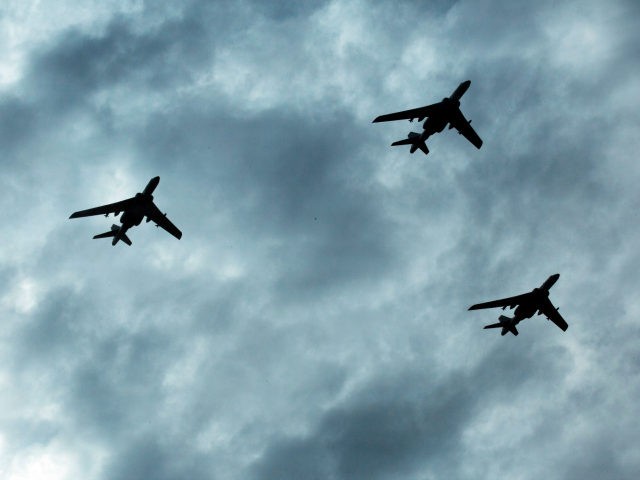The Chinese military conducted what it called a “routine” control that sent Japanese jets scrambling Sunday over the East China Sea, with Japan warning that they are keeping an eye on the increasingly “expansive” activities of China’s military assets.
China sent over 40 military aircraft, according to the AFP, over an area known as the Miyako Strait near southern Japan, not crossing into Japanese exclusive airspace but cutting close enough that the Japanese self-defense forces responded promptly. The area is near the East China Sea, where China claims the Japanese Senkaku Islands, an uninhabited but resource-rich area. Two of the known aircraft are believed to have been fighter jets. The
The area is near the East China Sea, where China claims the Japanese Senkaku Islands, an uninhabited but resource-rich area. Two of the known aircraft are believed to have been fighter jets. The Associated Press identifies the known aircraft passing through the region as “two fighter jets, four bombers and two reconnaissance aircraft.”
“We will continue to keep close eyes on the Chinese military activities which have been expanding and become more frequent,” Japanese Chief Cabinet Secretary Yoshihide Suga said, noting it was the first time the Japanese military had documented a Chinese presence in that area.
Prime Minister Shinzo Abe also addressed the incident in opening remarks for the new parliamentary session, vowing, “we pledge to protect Japan’s territory, and in the sea and air.” Japan rejects “attempts to unilaterally change the status quo” and expects to share “a mutual understanding that we’re significantly responsible for regional peace and prosperity,” he added.
China, meanwhile, has responded to the alarm by downplaying the military exercise as “routine” and asserting that they took place in China’s East China Sea Air Defense Identification Zone (ADIZ), which China established over the sea in 2013. The ADIZ requires all non-Chinese aircraft to identify themselves to Beijing before passing through or face the use of force, even in territory not belonging to China. At the time, Japan asserted it would not heed the ADIZ, and President Barack Obama issued a statement warning that any military attack on Japanese aircraft would bind America by treaty to respond on Japan’s behalf. The ADIZ has gone largely ignored since then.
A spokesman for the Chinese government asserted that the drill was completed “in accordance with the needs of the Air Force to defend national sovereignty and security, as well as to maintain peaceful development.”
Japan has attempted to strike a conciliatory tone with China, particularly in the greater context of both nations being vexed by the belligerence of neighboring North Korea. As Abe warned in the parliament that Japan would not permit any military slights on Beijing’s part that endangered its national security, Japan’s top navy official Adm. Tomohisa Takei said Monday that the Navy is hoping to work with China. “Our door is open,” he told his Chinese counterparts.
That attitude contrasts significantly with that of Defense Minister Tomomi Inada, who spoke in Washington D.C. earlier this month asserting that Japan was prepared for a struggle with China and that Tokyo was seeking a more outsized role in the South China Sea territorial dispute. Japan on its part will increase its engagement in the South China Sea through, for example, Maritime Self-Defense Force joint training cruises with the U.S. Navy, bilateral and multi-lateral exercises with regional navies, as well as providing capacity building assistance to coastal nations,” she stated.
Japan does not make any territorial claims in the South China Sea, though it has expressed concern with China’s multiple projects in the region. China has built artificial islands housing surface-to-air missiles, fighter jets, and advanced surveillance technology in the Spratly and Paracel Island chain, destroying complete reef ecosystems in the process. China claims territory belonging to the Philippines, Vietnam, Brunei, Taiwan, and Malaysia, as well as waters off the coast of Indonesia’s Natuna Island. The Permanent Court of Arbitration at The Hague found in July that China’s claims were fully invalid; China has vowed to disregard the court completely.

COMMENTS
Please let us know if you're having issues with commenting.